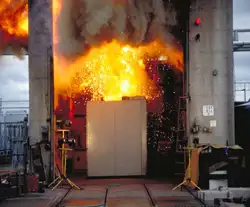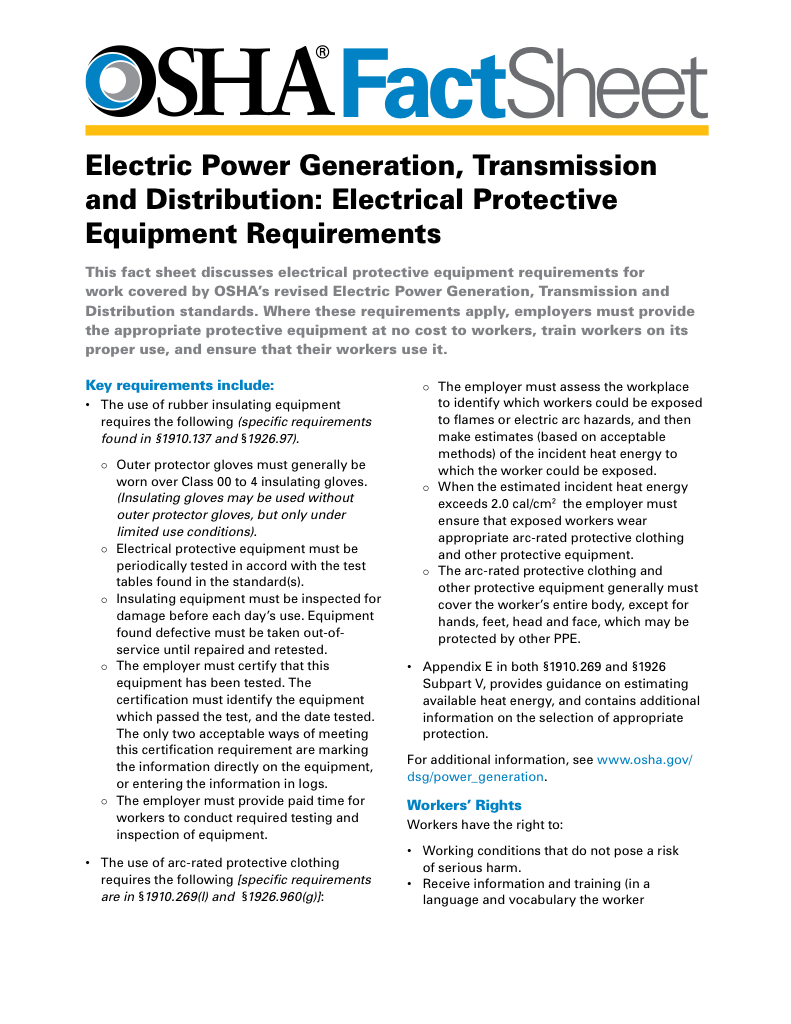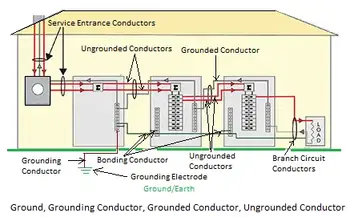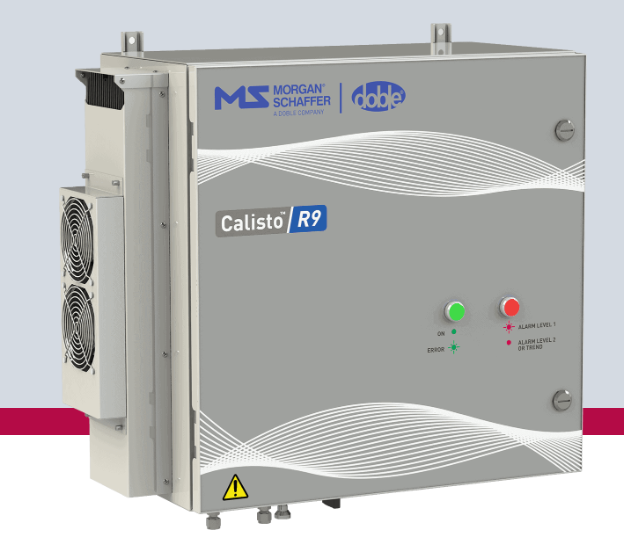What is Arc Flash?
By R.W. Hurst, Editor

NFPA 70e Training
Our customized live online or in‑person group training can be delivered to your staff at your location.

- Live Online
- 6 hours Instructor-led
- Group Training Available
Download Our OSHA 3875 Fact Sheet – Electrical PPE for Power Industry Workers

- Follow rules for rubber gloves, arc-rated PPE, and inspection procedures
- Learn employer obligations for testing, certification, and training
- Protect workers from arc flash and electrical shock injuries
Arc flash is a dangerous electrical explosion caused by a fault or short circuit, producing heat hotter than the sun, intense light, and pressure waves. It is one of the most serious hazards in electrical work, capable of causing severe injury, equipment damage, and even death.
What is Arc Flash?
It is a sudden release of electrical energy through the air that can cause severe injury or death.
✅ Generates extreme heat, light, and pressure from electrical faults
✅ Produces molten metal, sound waves, and toxic gases
✅ Requires proper PPE, hazard analysis, and NFPA 70E/CSA Z462 compliance
What Causes Arc Flash?
An arc flash occurs when electricity travels through the air rather than its intended path. This breakdown of insulation or isolation often creates a violent electrical explosion. Several factors can trigger the event, including:
-
Equipment failure such as deteriorated breakers, switches, or transformers
-
Human error during installation, maintenance, or testing
-
Environmental conditions like dust, corrosion, or moisture that form a conductive path
-
Accidental contact with energized parts, such as dropped tools or improper repairs
Because numerous variables contribute to arc flash hazards, employers are required to conduct a thorough analysis to identify and mitigate these risks. Learn more about conducting an Arc Flash Study.
Why an Electrical Explosion Is So Dangerous
Temperatures in an explosion can exceed 35,000°F — hot enough to vaporize copper and steel. The explosion produces:
-
Molten metal and shrapnel that can burn through clothing and protective gear
-
Pressure waves strong enough to damage hearing, rupture eardrums, or collapse lungs
-
Blinding light and deafening noise that disorients workers in a split second
The human cost of these events is devastating. Many workers suffer burns, trauma, and long-term complications from Arc Flash Injuries. To reduce these risks, standards such as NFPA 70E and CSA Z462 set out strict NFPA 70E Arc Flash Requirements for PPE, labelling, and hazard boundaries. A critical part of these standards is the Arc Flash Boundary, which defines the minimum approach distance where protective measures are required.
Test Your Knowledge About Arc Flash!
Think you know Arc Flash? Take our quick, interactive quiz and test your knowledge in minutes.
- Instantly see your results and score
- Identify strengths and areas for improvement
- Challenge yourself on real-world electrical topics
Industries and Workers at Risk
Arc flash hazards are not limited to high-voltage utilities—they can occur in any workplace where energized equipment is serviced. The risk is highest for:
-
Electricians who install, maintain, or repair electrical systems
-
Utility line workers are exposed to high-energy transmission and distribution systems
-
Industrial maintenance staff working in factories, refineries, and plants with complex equipment
-
Contractors who may encounter poorly documented or modified electrical installations
In these environments, even a momentary error can have life-altering consequences. A comprehensive hazard analysis helps determine the potential incident energy and guides the choice of PPE and boundaries. OSHA’s lockout tagout standard (1910.147) also plays a critical role in preventing accidents during maintenance.
Electrical Arc Hazard Prevention
Preventing arc flash incidents requires more than protective gear; it demands a layered safety strategy that addresses both people and equipment. The most effective practices include:
-
De-energizing equipment whenever possible before performing work
-
Conducting an incident energy analysis to calculate potential hazards and apply accurate warning labels
-
Training qualified workers to recognize hazards and follow safe procedures
-
Requiring appropriate PPE matched to the calculated incident energy level
-
Adhering to safe work standards such as NFPA 70E and CSA Z462
These practices form the foundation of a strong safety program. For engineers and safety managers, the IEEE 1584 standard provides the calculation methods used to determine incident energy and safe boundaries.
To apply these principles directly, use our interactive Arc Flash Calculator.
Standards and Regulations
-
Compliance with established safety standards is central to reducing arc flash hazards:
-
NFPA 70E (U.S.) – Defines risk assessment procedures, approach boundaries, PPE categories, and labeling requirements. See our full NFPA 70E guide.
-
CSA Z462 (Canada) – Provides Canadian employers with aligned guidelines for hazard analysis and protective measures. Explore the CSA Z462 Standard.
-
OSHA Regulations – Enforce workplace safety, including requirements for electrical safety-related work practices and lockout tagout.
-
Together, these standards provide the framework for assessing risk, training employees, and implementing protective measures that prevent life-threatening incidents.
Training and Compliance
Proper training is one of the most effective defenses against arc flash hazards. Workers must be able to identify risks, select the right protective equipment, and follow safe work practices under both normal and emergency conditions. A comprehensive training program should cover:
-
Hazard identification and how to recognize potential arc flash situations
-
PPE selection and proper use, based on calculated incident energy
-
Application of warning labels and hazard boundaries
-
Emergency response procedures to minimize injury if an event occurs
For companies, compliance also means keeping employees up to date with the latest requirements in NFPA 70E and CSA Z462. Explore our Electrical Safety Training programs, which provide practical instruction to help companies comply with NFPA 70E and CSA Z462 Arc Flash Training Arc Flash Training, while reducing workplace risks. Ready to protect your workforce and meet compliance? Request a Free Training Quotation.
Frequently Asked Questions
What is an electric arc incident in simple terms?
It’s an electrical explosion that happens when electricity jumps through the air, releasing extreme heat, light, and pressure.
What causes an AF?
Most often it’s triggered by equipment failure, dust or corrosion, or accidental contact during maintenance. A thorough Arc Flash Study helps identify these risks in advance.
How hot can an electrical arc event get?
Temperatures may exceed 35,000°F—hotter than the surface of the sun.
What PPE is required for electrical arc hazard protection?
PPE depends on the calculated incident energy. See our Arc Flash PPE guide.
What standards regulate safety?
NFPA 70E in the U.S. and CSA Z462 in Canada provide comprehensive guidelines.
Related Articles








